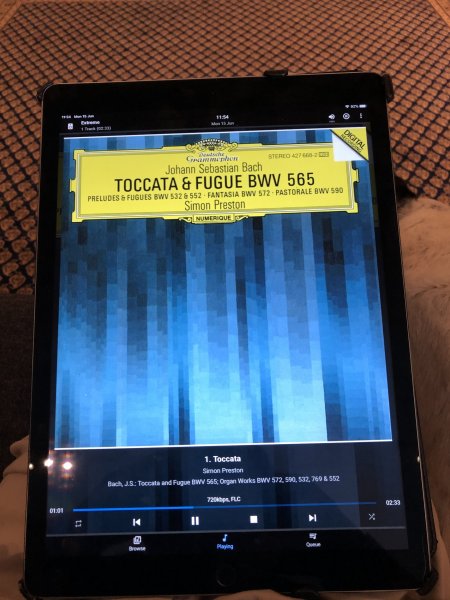I have debated whether I should post this or not. It's not relevant for most Extreme users. But a few of my audio friends from another forum with whom we used to tweak DIY servers together, now bought Extreme servers. They are the ones who will probably try to push their Extreme to its limits. So that post may give them something to think about. I also considered emailing Emile, but I don't think Emile leaves any stones unturned, and I doubt I can tell him anything he does not already know.
Having said that, I would not recommend Extreme owners to do anything on their own unless they absolutely know what they are doing. Installing software on the Extreme can ruin the carefully tweaked system and have pretty bad outcome. Okay, now that the disclaimer is out, if you are into that 1% of people left who like to explore and know exactly what you are doing, please read below.
I have been playing around with my DIY dual Xeon, which has similar hardware like the Extreme. It's also running Windows 10 Enterprise LTSC, and I configure CPU affinities, priorities, etc. with process lasso in probably a similar way like the Extreme. There has been a lot of tweaking on this DIY build - some things worked well, some made it worse, but I wanted to share one of the biggest improvements in sound quality that I believe would also apply to Extreme users.
This test was triggered by my last conversation with
@romaz about networking tweaks. At that time (and I know Roy changes things quickly), Roy had tried to use HQPlayer while completely unplugging the Extreme from the network. I was not interested in that type of configuration for multiple reasons, but most importantly:
1. Roon sounded better than ever with this DIY server, and I was thrilled to be able to use Roon again (stopped using it a while ago in favor of Euphony/Stylus).
2. I could not accept the level of inconvenience - getting up to unplug/plug the network cable every time I wanted to change a track. I would rather play my vinyl records in that case.
3. I am using a NOS R2R DAC which does not benefit from upsampling. Actually upsampling with my DAC may cause some weird effects. Using HQplayer just did not sound like the right approach.
But I could not stop thinking WHAT IF, WHAT IF...
What if I try HQPlayer with no upsampling? Okay, that's an easy test. Downloaded and installed HQPlayer. Configured it not to upsample. Configured Roon to output to HQplayer. Improvement? Hard to say... the sound changed somewhat, but it definitely was not a significant improvement.
What if I try HQPlayer with no upsampling but get rid of Roon? That's fine, but unlike the Extreme servers I did not have VNC server installed on my computer. Remote Desktop is removed as part of stripping down my Windows. My best option to connect to the server was via KVM.
I probably should not assume that everyone here knows what KVM is, so let me explain.
Servers that are installed in data centers and managed remotely sometimes need to be power cycled remotely, or they may need their BIOS changed, or even the Operating systems to be reinstalled. Imagine your Extreme fails to boot Windows (knock on wood!) - you would not be able to connect via VNC or TeamViewer, because the Operating system has not loaded. Your only option is to connect a keyboard and monitor to see what happens. Well, that's not really an acceptable option for remotely managed servers. That's why most servers provide out of band management interface. Think of it as an option to use keyboard, video, and mouse remotely from a web-browser. It's a low-level hardware device that does not need an operating system to operate.
My Asus SAGE motherboard came with this little BMC card that provides KVM access:
From my previous experiments with DIY servers I know that network traffic impacts performance. Euphony / Stylus was loading everything in RAM and trying to do as little I/O (input/output) activity as possible. Roon developers prioritize convenience over sound quality, and Roon generates a lot of network traffic that can potentially impact the sound quality. That's why Roy discovered that unplugging the network completely sounds so good. And BTW, no server is immune to the negative effect of I/O. So this is not a negative for the Extreme. The Extreme, with its dual CPUs, is going above and beyond any other server I have seen to minimize this impact, but as we have discovered, network tweaks are beneficial even to Extreme owners.
What if I disable all network cards in Windows, so the OS cannot perform any network activity? And what if I use HQplayer with no oversampling and connect via KVM to control the software. Well, this my friends was one of the biggest improvements on my DIY server. If Extreme owners get even half of the improvement I got, it would still be a huge improvement. I need to do a few more experiments, but they would have to wait until next weekend.
My conclusion so far is two folded.
1. Roon sounds incredible with this hardware, and I am sure it sounds even better on the Extreme. It's the best quality Roon I have ever heard. But there are still other players out there that sound better than Roon. Maybe one day Emile will write his own "Extreme" player.
2. No matter what you do, network activity has impact on the server performance. No network is the best network.
If the 0.1% remaining users (Is that even 1

) would like to experiment try installing that BMC module and give it a try.
And hopefully Emile does not get upset with my post. By all means, feel free to delete if not relevant.
Cheers,
Nenon











